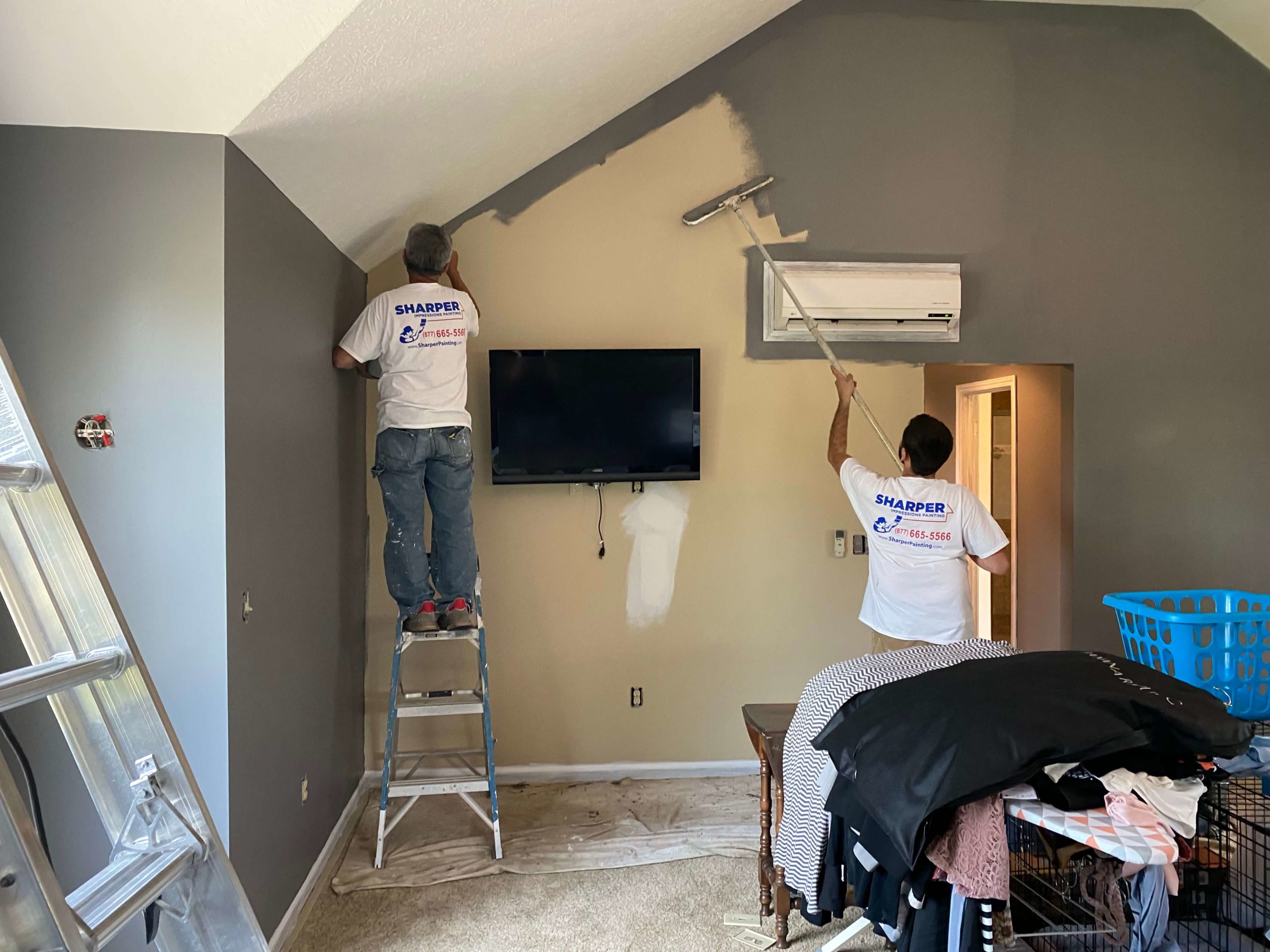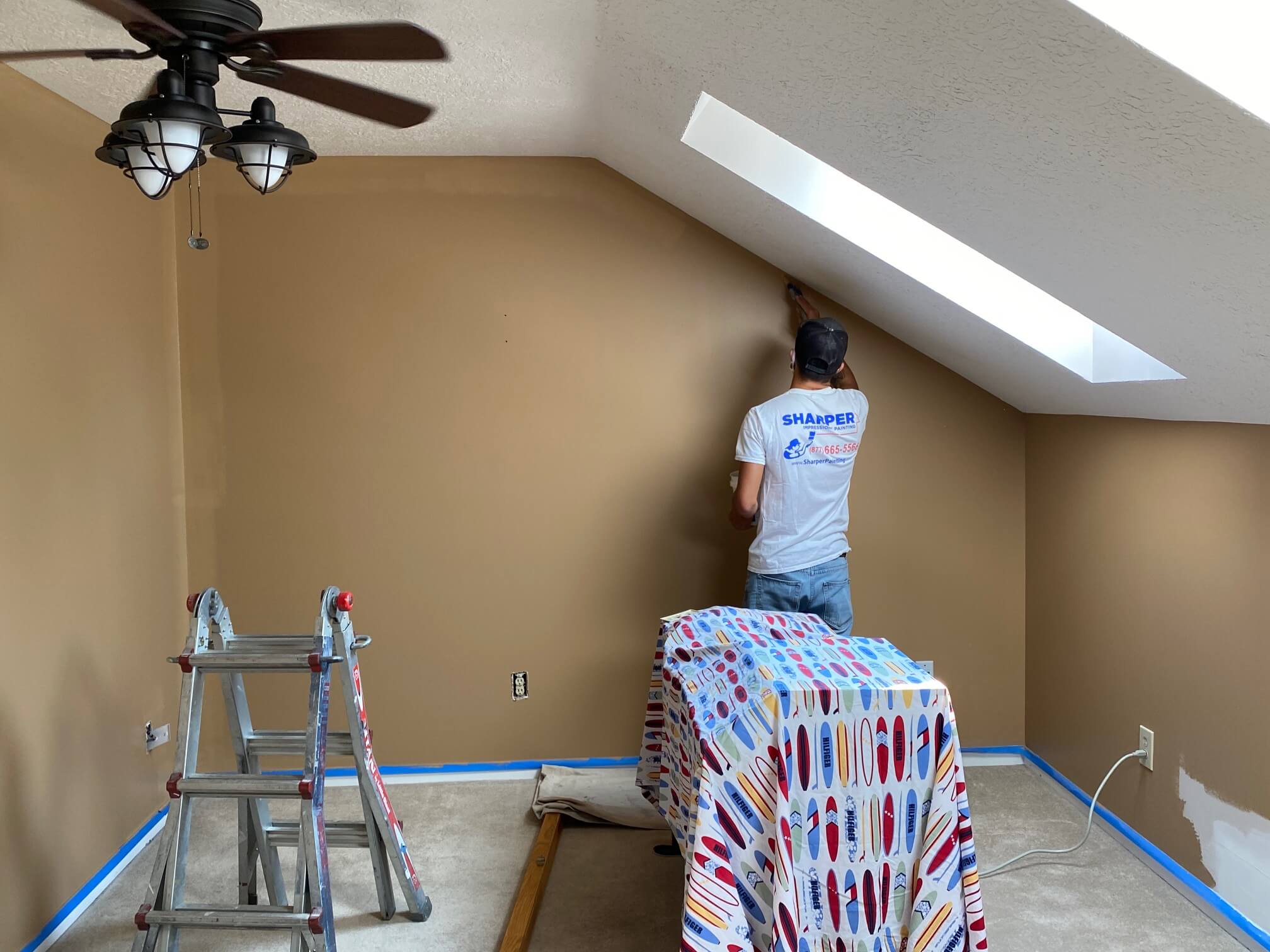No one wants to paint a room themselves only to be left with a rough, bumpy finish. If you want freshly painted interior or exterior walls, trim, or doors, you probably want the finished product to look high-quality and smooth.
So, what’s the best way to get that smooth paint finish you’re envisioning? Is there a trick, or a secret the professional painters aren’t telling you?
At the end of the day, while we’d like to be able to snap our fingers and get a perfectly smooth finish, it’s not that simple. There are, however, a few best practices that professional painters follow to get that perfect finish in as little time as possible. Let’s talk through them.
How to Give Walls a Smooth Paint Finish
It All Starts With the Prep
Prep work often takes a bulk of the time when painting, and for good reason. If proper prep work isn’t done (or is done lackluster), and the surface underneath the paint isn’t made smooth, of course the paint won’t look smooth. Professional interior painters take the time to prep the surface thoroughly and correctly, using a few best practices:
- They fill in cracks and holes: The pros know that spackle and a putty knife come in handy for covering up cracks and holes that keep paint from rolling on smooth. After filling in with spackle, professional painters will use sandpaper to smooth out the surface of the dried spackle, then wipe the area clean to remove any residual dust and debris.
- They remove all layers of wallpaper (including the adhesive backing) or old, peeling paint: To have a completely smooth finish after painting, professional painters need to work with a completely smooth surface. Things like wallpaper adhesive and old, peeling paint create a rough, bumpy surface that doesn’t look good when painted over.
- They may pole sand the walls: Some walls have bits of previously dried paint or may have a slick sheen. In those instances, a sanding pad on the end of a pole may be used to smooth out the surface prior to painting and etching the glossy surfaces so the new paint application will grip and go on smoothly.
- They clean the surface with a damp cloth: Professional painters wipe the surface down with a damp cloth to remove any dust, dirt or cobwebs that may end up mixed in with the paint and tarnish the end result. We always make sure the surface has completely dried before adding any primer or paint.
If we’ve said it once, we’ve said it a thousand times: The quality and longevity of your finish is almost entirely due to the quality of the prep work.
Don’t Skip the Primer
Some dark wall colors or tough to stick surfaces may need a primer application to help the top coat ‘stick.’ Primer seals the surface and provides a smooth and clean area for paint to adhere. While it looks a lot like paint, primer has a higher concentration of solids plus an adhesive binder. Professional painters prime over the whole surface using the proper tools, products and techniques to ensure the right consistency, especially at the spackled areas.
Hire a Professional
To guarantee a smooth finish after painting, consider turning the job over to the pros who’ve done it hundreds of times. They have the patience and skill to do all of the time-consuming prep work that makes or breaks a smooth finish. They also have the knowledge and expertise to choose the right kind of primer for the surface and conditions. And they have the skill to spread the paint evenly for that perfectly smooth finish you want.
A pro knows how to cut in the new paint with the proper brush and then roll into that cut line so that the difference in brushing and rolling is blended. Improper application can result in big strokes of brush marks that can be seen in different light and angles. Where the orange peel look of the roller meets the brush marks needs to be blended by a professional application process.
Getting a smooth paint finish requires doing a proper job, which requires expertise and preparation. A professional painter will take time to prepare surfaces so paint adheres properly. This may involve stripping old paint, filling in holes, sandpapering rough areas, and priming. The end result will be smooth and long-lasting.
Remember: Anything worth doing is worth doing well.
Professional Interior Painting Services
Our home painting experts are ready to help you tackle your painting project. We provide interior wall painting services, including prepping and priming to take the workload off your shoulders. Contact us today for a free painting quote.


